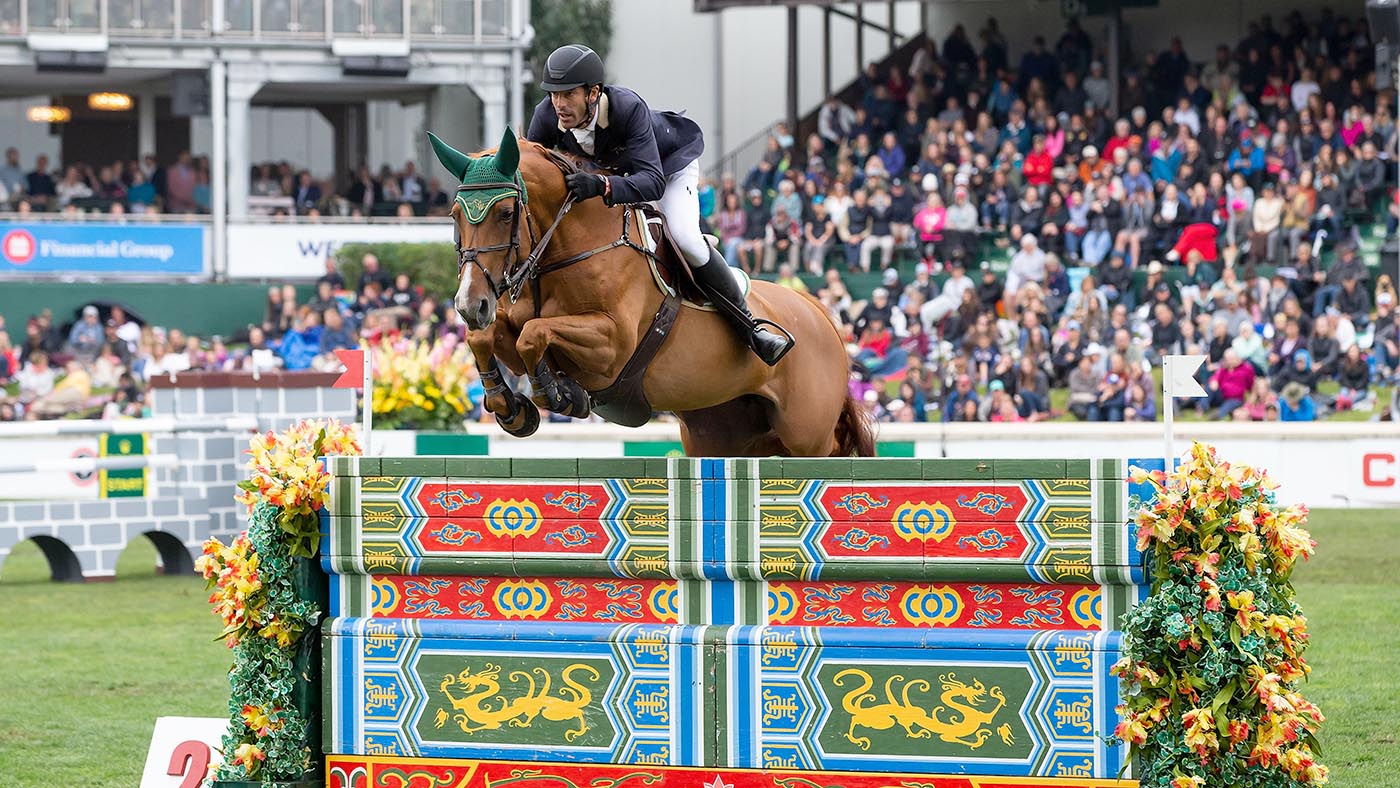Grand prix showjumping courses need drama to hold public interest, says former international showjumper Graham Fletcher, who is a highly respected trainer, as well as a breeder and producer of young horses.
SOME years ago, international rider James Fisher and I were standing ringside among masses of spectators enjoying a showjumping class at a county show.
“It was this atmosphere and excitement that made me want to become a showjumper,” said James.
He was so right; and after 18 months of no public watching our sport, we realise how much we’ve missed them.
At the recent South of England show, crowds flocked around the superbly watered grass arena to see some top-class showjumping over challenging courses built by Ben Townley.
In my opinion, Ben and Mark McGowan are currently the best course-designers in Britain. And that’s because they build with flair and imagination, making a clear round over their courses an achievement. They definitely don’t go in for repetitive clear rounds, then soften the jump-off so riders have to go at 300mph to finish in the top 10!
Don’t get me wrong, I’m all for nice, flowing courses in young horse and novice classes. But when the public has paid to watch a competition, they want entertainment. Every top sport needs a dash of drama. If golf filled in its bunkers and did away with gradients, the best player would still win. There just wouldn’t be many people watching and the TV cameras would have long since gone.
Ability and control
LIGHT poles and technical distances are now an integral feature of showjumping courses. And although they’re here to stay, too many course-builders were going solely down that avenue. The end result is making the sport appear too prissy to the general public who can’t be expected to understand the finer technicalities.
It’s no surprise that the likes of Aachen and Calgary – which never followed that trend but stuck with courses requiring horses to be careful and brave to jump their million-euro grands prix – are televised worldwide.

Canada’s Spruce Meadows in Calgary has stuck to its roots, with its famous grand prix course requiring bravery and careful jumping.
It’s right that courses should demand accurate, careful jumping; but they should also have two or three jumps to test a horse and rider’s bravery. A wall, a triple bar and maybe every now and again a filler placed in front of the jump rather than in the middle. Like a water jump that has to be ridden strongly, such fences upset riders’ rhythm and therefore highlight ability and control.
I’m not saying that every competition should be testing. For example, at a two-star show, there are usually two ranking classes. So let the first one be about speed; then riders with horses that max out at 1.45m can go as fast as they can and win as much as they can. But when it comes to the grand prix, surely that should be about jumping?
Top horses come into their own
I’LL leave the last word to David Broome who always said he wanted grands prix to be properly big. Otherwise, it was a waste of owner Lord Harris’s time and money buying him talented horses like Philco and Sportsman if they couldn’t come into their own.
Knowing he had plenty under the bonnet throughout his stellar career, Broomey wanted courses bold enough to flex that horsepower. And
as the winner of six King George V Gold Cups on six different horses, he certainly did that!
.
This exclusive c0lumn is also available to read in Horse & Hound magazine, on sale Thursday 1 July.
- Do you agree with Graham? Let us know your thoughts by emailing hhletters@futurenet.com including your name, local town and county for the chance to feature on the letters page in Horse & Hound magazine. One letter writer each week will receive a bottle of Champagne Taittinger, so what are you waiting for?
You may also be interested in…

William Funnell: ‘Let’s get county shows back on their feet’ *H&H Plus*

Adam Cromarty: ‘Collecting rings are now safe havens’ *H&H Plus*

Producing top-level jumpers: ‘The most important thing with a young horse is not to mess them up’ *H&H Plus*

‘He’ll always give you his best shot’: watch Holly Smith and her Derby debutant Fruselli making a splash with victory in La Baule
“It was an ideal class for him; he has loads of endurance, he’s obviously a good speed horse and he’s

William Funnell on the horses who’ve made his career: ‘Things were stacking up against me – then Mondriaan came along’
William Funnell talks about Mondriaan, the horse who gave him three Hickstead Derby wins, and his breakout home-bred, Billy Congo

